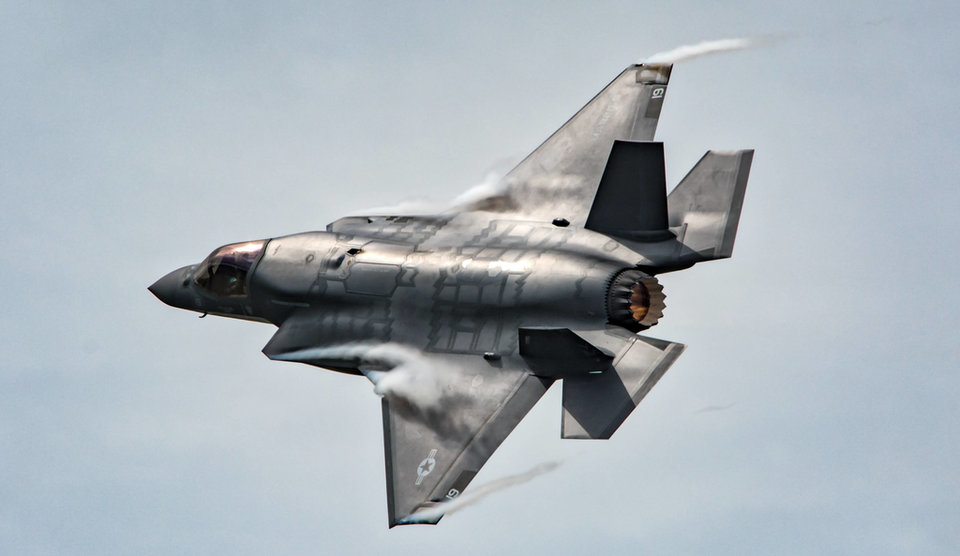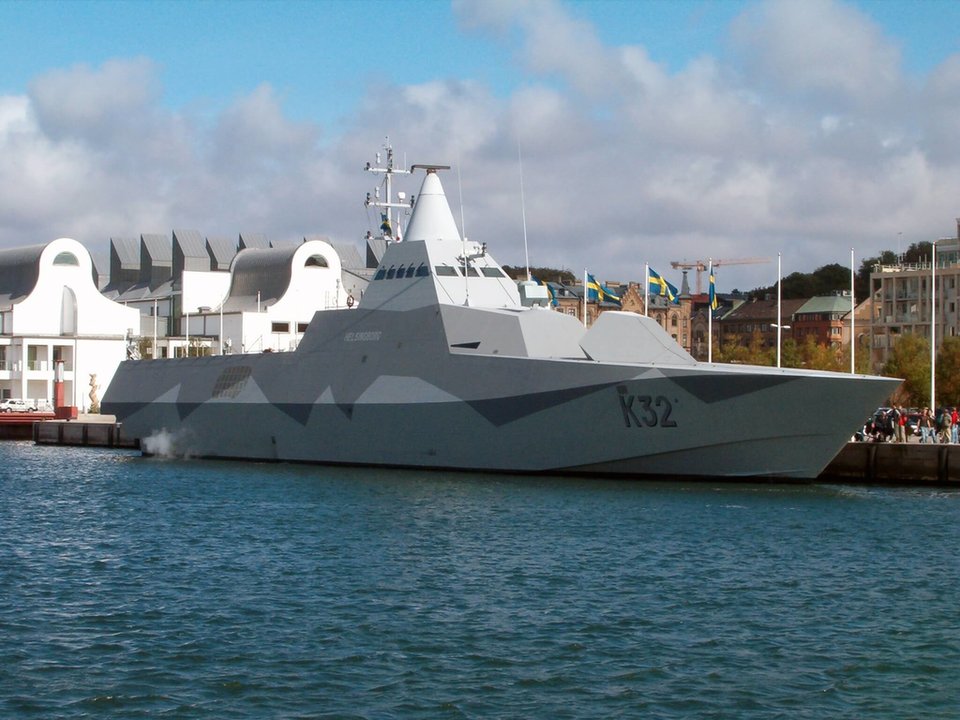The Baltic region is on red alert. Heightened threats from Russia and an increase in cyberattacks have prompted the Nordic nations to gear themselves up for a new type of warfare. Enhancing military capabilities and investing in new weaponry is becoming imperative for national defence sectors.
Norway is advancing its new F-35 fighter jet programme, Sweden is preparing its entire military organisation in case of heightened alerts, and Denmark is positioning more troops on the Baltic Sea. All signs point towards a greater allocation of the government budget to focus on the defence sector.
Historically, Norway has spent the most on defence and plans to inject more funds into the sector, while Finland, which has spent relatively less than its neighbours, has ramped up its military spending in recent years. Even Iceland, one of the few nations in the world that has spent 0% of its government budget on defence, has dedicated some funds to NATO-related activities since 2008. With this in mind, how do the Nordic compare when observing military spending trends?
Norway
After an elongated period of decline between 2002 and 2016, which oversaw a gradual fall from 4.5% to 3.2%, Norwegian military spending increased to 3.4% in 2017 as a percentage of government expenditure after the government injected Nkr148bn ($183.3m). For 2018, the Norwegian Government has planned to boost spending in its defence sector with the addition of Nkr3bn ($371.6m) to the current budget. It has committed to increasing its spending each year as outlined in its long-term plan 2017-2025. The new budget will allow the government to implement phase two of its plan to improve readiness levels, increase the numbers in its combat units and provide better training, according to the minister of defence Ine Eriksen Søreide. Since 1988, Norway has spent the highest proportion on defence out of all the Nordic countries.
A portion of the new funding will be made available for the transition from F-16 to F-35 fighter jets and the continued expansion of Ørland air station to accommodate the new jets. It will also permit the acquisition of three new Coast Guard vessels, as well as participation in intergovernmental operations such as NATO’s High Visibility Exercise Trident Juncture later this year.

As part of its general increase in defence spending, Norway will be funding a transition from F-16 to F-35 fighter jets.
Sweden
Sweden has repeatedly spent 2.2% of government expenditure on defence since 2015, the lowest proportion it has dedicated to defence in the last 30 years. Military spending initially remained stagnant between 1992 and 2001 at around 3.4% to 3.6%, before to falling to 2.4% in 2008.
In its Budget Bill for 2018, Swedish authorities outlined Skr2.7bn ($310.8m) additional funds to be allocated to the defence sector, of which Skr2.3bn ($264.7m) will be available for military defence and Skr400m ($46m) for civil defence. It prioritises measures to implement the 2015 Defence Resolution until 2020, which includes expanding the scope of military and total defence capabilities after 2020.
The government proposed an allocation of Skr80m ($9.2m) to the National Defence Radio Establishment and the Military Intelligence and Security Service to provide specific security services on counterterrorism and cyberattacks, which have posed an increased threat in the past 25 years.
The Swedish Defence Commission released a report estimating that between 2021 and 2025, the country will need to invest Skr4.2bn ($484m) each year to incorporate all aspects of the total defence concept, including entire war organisation mobility in the event of a heightened alert.

The Swedish, Finnish and US defence minsters sign a trilateral agreement in Washington, DC. Image: Department of Defense
Denmark
Danish Government expenditure on defence rose again at a rate of 2.2% in 2017. For 2018, Danish lawmakers agreed to devote an additional kr12.8bn ($2.14bn) to defence until 2024, citing Russia as one of the major security threats. Denmark will also establish a 4,000-member army brigade located on the Baltic Sea. The deal states that by 2023, military spending will be 20% higher than current levels.
Like other Nordic nations, there has been a general decline in proportionate defence spending since 1988 at a time when the figure was 3.6%. Spending stayed relatively stable between 1994 and 2008 at around 2.6% to 2.9%. In 2016, after Russia moved its nuclear-capable Iskander-M missiles to its enclave in Kaliningrad on the Baltic Sea and deployed its S-4000 air missile defence system there, Denmark said that Russia had hacked its defence computer network and gained access to employee emails. Danish Foreign Minister Anders Samuelsen mentioned Russia, terrorism, cyber threats and irregular migrant flows as the nation’s top current security concerns in a separate statement.

After Russia moved nuclear-capable Iskander-M missiles to Kaliningrad in 2016, Denmark said that Russia had hacked its defence computer network.
Finland
In 2017, the Finnish Government spent 2.6%, ranking second after Norway. Finland’s proportion of government spending for the defence sector had been relatively low compared to the other Nordic nations, never rising above 3.2% in the last 30 years. However, Finland’s Strategic Defence Intelligence reported that the nation’s military budget is likely to reach $3.5bn by 2023, witnessing a compound annual growth rate (CAGR) of 11.25% over the period. Annual defence spending rose to $3.5bn in 2018, meaning that the Finnish Government is anticipated to allocate a cumulative sum of $22.7bn by 2023.
As with other Nordic nations, reasons for the expenditure boost are cited as enhancing capabilities, mitigating potential security threats from Russia and conducting international peacekeeping missions. The procurement of fighter jets and multi-role aircrafts is a priority, as well as corvettes and a land-based C4ISR system. The nation’s homeland security spending is expected to rise from $1.8bn currently to $2.2bn in 2023, at a CAGR of 3.82%.
Finnish Defence Minister Jussi Niinistö met with Swedish Defence Minister Peter Hultqvist and US Defence Minister Jim Mattis to sign a trilateral treaty on strengthening defence relations, with a special emphasis on planning joint exercises.

Finland is investing in new corvette ships, in addition to fighter jets and a land-based C4ISR system. Image: Skeeze/pixabay
Iceland
Iceland has not dedicated any proportion of its government budget on military spending, according to data from the Stockholm International Peace Research Institute. While Iceland does not have an official army, the government does dedicate some fund towards the defence sector, in the form of maintaining the Iceland Air Defence System, part of the Icelandic Coast Guard. The country is also a member of NATO, contributing financially and with civil personnel.
SIPRI statistics from 2008 to 2012 revealed that Iceland spent $26.3m in 2008, which gradually fell to $17.9m by 2012. Data for the 2012-2017 period was not available.
Some funds are also allocated to the ‘Vikingasveitin’ paramilitary special forces. The ‘Viking Squad’, officially known as the Special Unit of the National Police Commissioner, is an elite counterterrorism unit that specialises in armed and unarmed infantry combat. It is said to be modelled on the Norwegian Emergency Response Unit counter-terrorist team that has conducted several exercises in Norway and Iceland.

Members of Iceland’s Vikingasveitan or ‘Viking Squad’. Image: Jakob Sigurðsson.